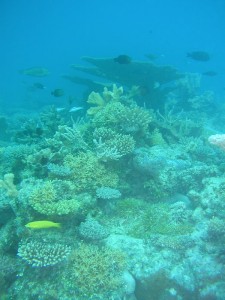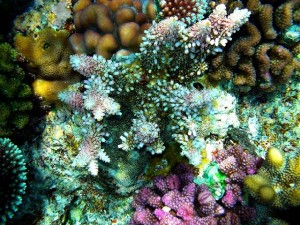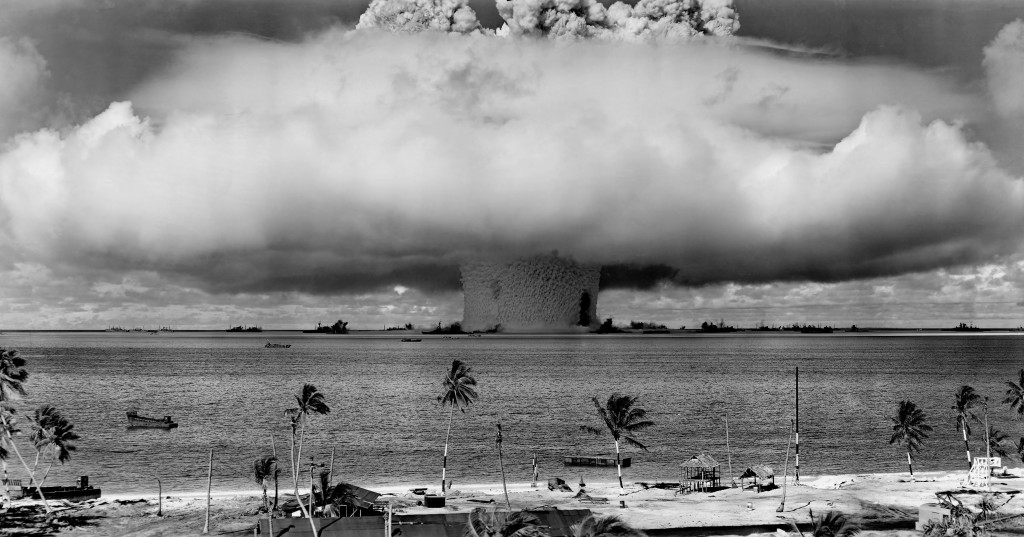The late-night radio airwaves—the insomniac’s solace, the new father’s companion—have been heavy with war, disaster and calamity for weeks now. How very different are the sounds of bombing runs over Tripoli from the small coughs and cries through the baby monitor, with which they commingle.
The most extraordinary news of the past two weeks, however, does not have a sound, at least not one that can be captured on the radio. It is the grace, strength and equanimity of the Japanese people under the most challenging conditions. It is a demonstration of what poets and social scientists alike would recognize as resilience—that ineffable quality of somehow remaining unbroken in the face of the unexpected and the catastrophic.
Measuring and enhancing resilience in human communities is a relatively new endeavor—one I plan to write about in the coming weeks—and it is perhaps easier to quantify resilience in the ecological than in the human sphere. It seems appropriate somehow that one of best documented and most dramatic recent examples of ecological resilience comes, like Chernobyl 25 years ago and Fukushima Daiichi today, packaged with all the bright futurism and dark paranoia of the nuclear age.
 Between 1946 and 1958, the United States set off 23 nuclear explosions on and around Bikini Atoll, a broken sliver of sandy islands near the northern edge of the Marshall Islands, in the tropical North Pacific. The largest of these, the 15-megaton “Castle Bravo” thermonuclear blast in 1954, was by itself the equivalent of 1,000 Hiroshima explosions, and entirely pulverized three of Bikini’s islands and their reefs. Sea surface temperatures were elevated above 55,000 degrees C, 30-meter-high surface waves scoured the low-lying terrain and blast columns punched down with obliterating force onto the lagoon floor 70 meters below. Radioactivity aside, the physical impacts alone were enough to alter profoundly the physical and biological environment at Bikini.
Between 1946 and 1958, the United States set off 23 nuclear explosions on and around Bikini Atoll, a broken sliver of sandy islands near the northern edge of the Marshall Islands, in the tropical North Pacific. The largest of these, the 15-megaton “Castle Bravo” thermonuclear blast in 1954, was by itself the equivalent of 1,000 Hiroshima explosions, and entirely pulverized three of Bikini’s islands and their reefs. Sea surface temperatures were elevated above 55,000 degrees C, 30-meter-high surface waves scoured the low-lying terrain and blast columns punched down with obliterating force onto the lagoon floor 70 meters below. Radioactivity aside, the physical impacts alone were enough to alter profoundly the physical and biological environment at Bikini.
Thanks to a thorough study of coral diversity in the Marshall Islands before the testing began, the explosions also amount to one of the single largest ecosystem-perturbation experiments on record. And the results, first published in 2008, are surprising to say the least.
Working from data collected at Bikini Atoll during a 2002 survey, scientists from Australia and the Marshall Islands reported in 2008 that the number of species—a marker of recovery—of coral at Bikini Atoll today is just about the same as it was before testing began. Some species have disappeared, especially those that lived only in lagoons, and others are newly present. But the atoll is not an underwater desert, as we might reasonably have expected it to become.
The lesson of Bikini Atoll is not that the dangers of nuclear contamination have been overstated, nor certainly that natural systems can bounce back from anything. Rather, it is that with certain conditions in place, nature—and by extension or analogy, humanity—is capable of profound resilience.

At Bikini, that resilience was possible, the authors argue, for several specific reasons. For one, it appears that the initial damage was patchy enough to allow some pockets of reef to survive intact, and act as seedbeds for broader recovery. Similarly, Bikini Atoll is downstream of other, less impacted reef systems that also could have supplied healthy colonizing larvae.
Crucially, the nuclear pounding finally stopped—acute disasters are more easily overcome than chronic ones, even of substantially smaller magnitude—and most importantly, humans have largely left the area alone ever since testing ended. In today’s seas, that is a rare thing indeed. “If the disturbance were to be repeated in the modern day,” the authors conclude, “recovery would not be expected to be as high, due to the combination of additional stressors associated with climate change and a possibly much altered atoll environment due to an additional 50 years of human occupation.”
The rest of the ocean, in other words, has become less resilient to disaster thanks to chronic human impacts, even as Bikini has managed to rebound. With luck, and effort, a resilient Japan will similarly rebound from its current tripartite disaster, in ways that other countries—Haiti after its earthquake 14 months ago, the US Gulf Coast after Katrina and the Deepwater Horizon—have not, for a set of reasons as specific, and perhaps as quantifiable as the Bikini reefs.
**
Images The Baker explosion at Bikini Atoll, 25 July 1946. via wikimedia commons. Lagoon corals at Bikini Atoll today, ARC Centre of Excellence/Silvia Pinca. Gratuitous unrelated coral shot, the interwebs.

Lovely piece. I’ve observed first-hand that resilience is extremely important in food webs impacted by invasive species. The more inherent resilience & redundancy an ecosystem has, the less disruptive the new species is. Looking forward to your exploration of this important concept!
Thanks for the article Thomas.
You can sugar coat this all you like. You can wrap the truth in sparkly, feel good distracting adjectives. The reality is that this atoll survived insanely devastating forces that the chicken-littles swore on their mother’s graves would destroy the ecology.
I will not support the obscene governments that empty-scrotumly tested their war machines at Bikini Atoll. I also have very little time for the bleating of those who unthinkingly decry nuclear energy.
Pretty false and misleading point to draw from the premise of this article – radiation is somehow OK because life in the future eventually returns to contaminated areas?
Yeah – life as a whole will always go on and reproduce in some form as it has for millions of years – thats fairly obvious. Just too bad those individuals living today that are directly effected and eventually killed by the adverse effects of the radiation won’t be around to enjoy it which possibly includes you and all the proponents of the nuclear industry that will now be ingesting a little extra Cesium in their diets over the next 30-years from the meltdowns in Fukushima!
At the same time, most will be severely genetically mutated when in contaminated land areas like it is in Chernobyl. Since the ocean is a huge body of ever-moving water that literally washes away and disperses the radioactive particles effectively decontaminating the surrounding area, there is no comparison of sea-life in the ocean to that on land which depends on the ever contaminated soil that remains contaminated for centuries unless its somehow removed. If you no some way to wash all the radioactive contamination out of the soil, the world would love to hear from you… [[edited out a long series of links to stories about the harmful impacts of radiation from weapons testing and Chernobyl … please see next comment for explanation why, and my response. – T Hayden]]
I’m jumping in here because the last two comments confuse me. “Sugar coating”? “Radiation is somehow OK”? My assumption is that these two readers were responding to something other than what appears under my byline above–preconceptions, ongoing discussions elsewhere on the ‘webs, poor reading comprehension–and thus missing the point of it entirely. Either that or I’ve lost control of my keyboard and am saying things I didn’t intend. Until told otherwise, I’m happily assuming that the 2nd two commenters are the outliers, and that most everyone else got the point.